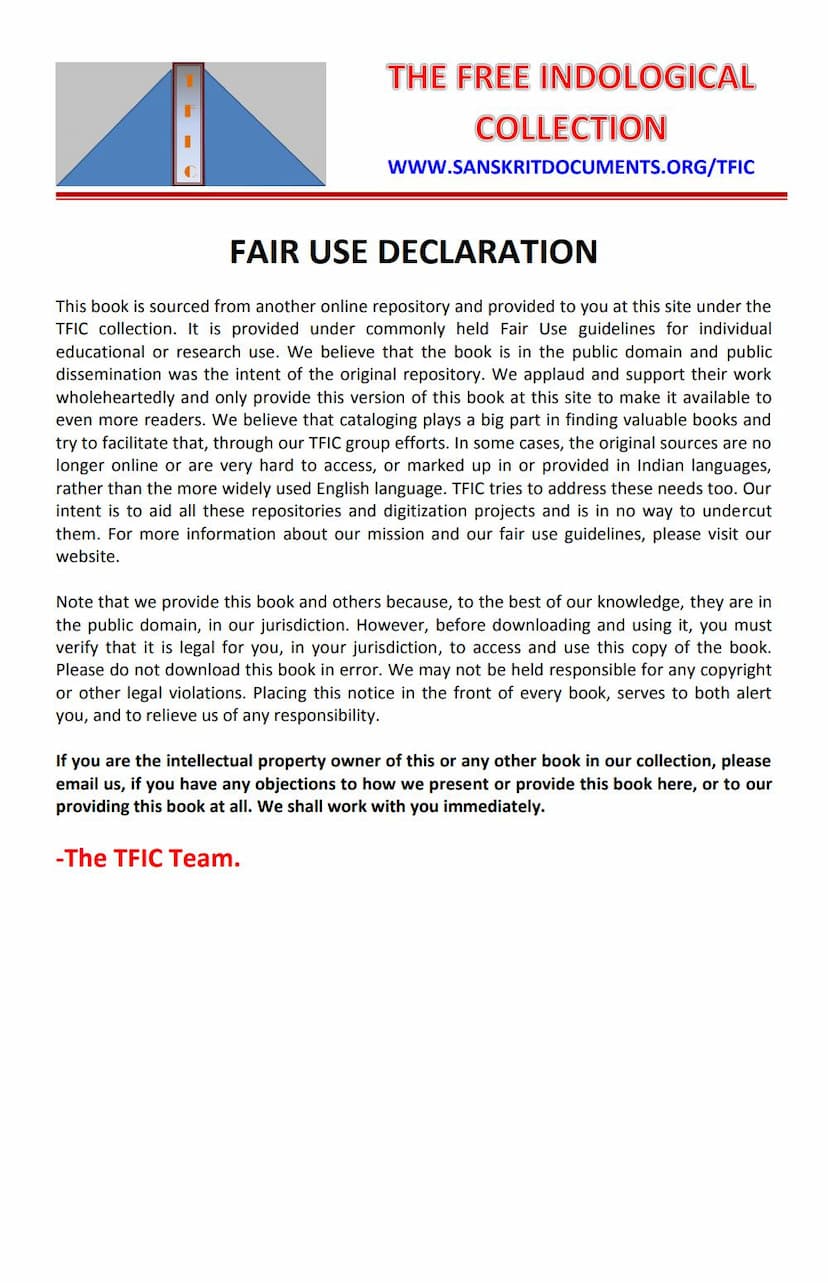Bauddh Tatha Jain Dharm
Added to library: September 1, 2025

Summary
Here's a comprehensive summary of the Jain text "Bauddh tatha Jain Dharm" (Buddhism and Jainism) by Mahendranath Sinh, based on the provided catalog link and text excerpts:
This book, "Bauddh tatha Jain Dharm," by Dr. Mahendranath Singh, offers a comparative study of Buddhism and Jainism, focusing on the Dhammapada and the Uttaradhyayan Sutra. Published by Vishwavidyalaya Prakashan, Varanasi, it aims to explore the philosophical, religious, ethical, psychological, and socio-cultural aspects of these two significant Indian religions.
The author, Dr. Singh, a scholar of ancient Indian history, culture, and archaeology, delves into the core principles of both traditions by extensively quoting from and analyzing these seminal texts. The book is structured to highlight both the similarities and differences between Buddhism and Jainism, offering a balanced perspective.
Key Themes and Comparisons Explored:
- Introduction to Buddhism and Jainism: The book begins by providing an overview of the origins and development of both religions, situating them within the context of the 6th century BCE when India witnessed significant social and religious reforms.
- Philosophical Tenets: A significant portion of the book is dedicated to comparing the metaphysical and epistemological frameworks of both religions.
- Anityata (Impermanence), Dukha (Suffering), and Anatman (No-Self) in Buddhism: The text explains Buddhist concepts like the Four Noble Truths, the Eightfold Path, and the doctrine of anatman.
- Jain Metaphysics: The summary highlights the Jain perspective on jiva (soul) and ajiva (non-soul), the concepts of karma (actions), bandha (bondage), samsara (cycle of birth and death), and the path to liberation (moksha).
- Anekantavada and Syadvada: The Jain philosophy of anekantavada (non-absolutism) and syadvada (conditional predication) is discussed as a means of understanding reality from multiple perspectives.
- Religious Principles: The book examines the fundamental religious doctrines and practices.
- Nirvana and Moksha: The Buddhist concept of nirvana (liberation) and its Jain counterpart, moksha, are compared. While both signify the cessation of suffering and the cycle of rebirth, the text notes subtle differences in their conceptualization.
- Trisharana (Three Refuges) and Arhat: The Buddhist concept of taking refuge in the Buddha, Dharma, and Sangha is contrasted with Jain practices. The status and description of an arhat (a perfected being) in both traditions are also analyzed, noting the significant influence of Jain ideas on Buddhist arhatship.
- Karma Theory: Both religions accept the principle of karma, but the text points out a crucial distinction: Buddhism views karma primarily as mental imprints, while Jainism considers it as physical, material substances that attach to the soul.
- Rebirth and Causality: The concept of rebirth driven by karma and causality is a shared theme, with both traditions emphasizing the role of actions in shaping one's destiny.
- Ethical Principles and Morality:
- The Eightfold Path vs. the Three Jewels (Right Faith, Right Knowledge, Right Conduct): The ethical systems are compared, highlighting the centrality of the Eightfold Path in Buddhism and the Ratnatraya (Three Jewels) in Jainism.
- The Five Great Vows (Mahavratas) vs. the Five Precepts (Panchasila): The ethical codes for monks and lay followers in both traditions are discussed, with a focus on similarities and differences, particularly concerning ahimsa (non-violence).
- Asceticism and Austerity: The book compares the emphasis on rigorous asceticism in Jainism with Buddhism's "Middle Path" (madhyamā pratipadā), which avoids extremes.
- Social Morality: The texts are analyzed for their teachings on honesty (amrisha), non-stealing (asteya), celibacy (brahmacharya), and non-possession (aparigraha).
- Psychological Concepts:
- Mind and Consciousness (Citta): The book delves into the understanding of the mind in both traditions, noting the Buddhist view of citta as a transient phenomenon and the Jain concept of mind as a subtle substance.
- Kashaya (Karmic Afflictions): The discussion covers the Buddhist and Jain perspectives on emotions like anger, pride, deceit, and greed (kashaya) as hindrances to spiritual progress.
- Meditation and Mental Discipline (Samadhi and Prajna): The importance of mental discipline, meditation, and wisdom in achieving liberation is explored.
- Social and Cultural Aspects:
- Caste System and Social Hierarchy: The influence of the prevailing caste system on both religions is examined, along with the reformist movements initiated by the Buddha and Mahavira against caste-based discrimination.
- Family Life and Social Customs: The book touches upon aspects of family structures, marriage practices, and funeral rites as depicted in the texts.
- Economic Activities and Professions: The texts offer insights into contemporary economic activities, including trade, crafts, and various professions.
- Beliefs and Practices: The presence of folk beliefs, worship of deities, and various rituals are discussed.
Key Focus Texts:
- Dhammapada: Considered the "Bible of Buddhism," it contains concise ethical teachings attributed to the Buddha, covering a wide range of subjects from the mind to the path of liberation.
- Uttaradhyayan Sutra: A foundational text in Jainism, it contains the teachings of Lord Mahavira, particularly concerning monastic conduct, ethics, and spiritual practices.
Author's Approach and Contributions:
Dr. Singh's scholarly approach is characterized by:
- Systematic Comparison: He meticulously compares doctrines and practices, identifying points of convergence and divergence.
- Textual Evidence: The analysis is strongly supported by direct quotations and references from both the Dhammapada and the Uttaradhyayan Sutra, along with other relevant scholarly works.
- Historical Context: The book provides historical context for the teachings, explaining how these religions emerged as responses to the socio-religious conditions of their time.
- Accessibility: The book is written in clear Hindi, making complex philosophical and religious ideas accessible to both scholars and general readers.
In essence, "Bauddh tatha Jain Dharm" is a valuable academic work that illuminates the shared spiritual heritage and distinct paths of Buddhism and Jainism, offering a deep and nuanced understanding of these ancient Indian traditions through the lens of their most revered scriptures.